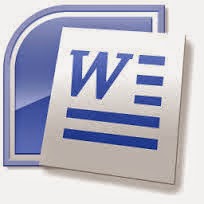Microsoft Access
A database is a collection of logically related and similar data. Database stores similar kind of data for a specific purpose that is organised in such a manner that may information can be derived from it, when needed. Microsoft access is an application which allows the creating of databases. Microsoft access is a Relational Database Management System (RDBMS). Access is a tool for managing the database. It allows you to design and create complete databases with quick and easy data entry, maintain them and search for information.Start MS-Access:
To start the MS-Access software, we need to
Click Start → All Programs → Microsoft Office → Microsoft Office Access

Components of MS-Access:
MS-Access stores data in its own format based on the Access Jet Database Engine. Access supports some object-Oriented techniques.
Templates: It is a complete tracking application with predefined tables, forms, reports, queries, macros and relationships.
MS-Access includes a collection of database templates, which are described as
- Assets: It is used to create an assets database to keep track of assets, including assets details and owners.
- Contact: It is used to create a contact database to manage information about people.
- Events: It is used to create an events database for tracking upcoming meeting, dealing etc.,
- Faculty: It is used to create a faculty database to keep track of information about contacts and education history.
- Marketing Projects: It is used to create a marketing projects database to track time-sensitive deliverable and vemlor status for project.
- Students: It is used to create students database to keep information about your students including contacts, about their guardians.
Queries in MS-Access:
|
Query Type
|
Description
|
|
Select
Query
|
Retrieves data from one or more tables and displays
the record set in a datasheet. This is the most common type of query.
|
|
Parameter
|
Prompts
the user to enter values that define the query, such as a specified region
for sales results or a specified price range for houses.
|
|
Cross-tab
Query
|
Arranges a record set to make it more easily
visible, using both row headings and column headings.
|
|
Action
Query
|
Creates
a new table or changes an existing table.
|
|
SQL
Query
|
An advanced query that is created by using an SQL statement.
|
Elements of MS-Access:
In MS-Access, database holds five major elements for every database operation.
( i ) Field Name: It is a label provided for a field that specifies the type of information contained in particular field.
( ii ) Field Type/ Data Type: It specifies the type of data stored in the field such as textual data and numerical data or combination of both. The default size of data type is 50 in MS-Access.
( iii ) Field Length: Field refers length or width to the maximum number of characters that a field can contain.
( iv ) Primary Key: A filed which is used to uniquely identify the records in a table. The primary key cannot contain null value.
( v ) Validation Rule: It is a condition that must be met before the data is accepted into the database.
MS-Access View:
You can create a table by two most popular ways
Database View: It shows the data in the database and also allows you to enter and edit the data but not allow to change the database.
Design View: It allows you to create or change the table and also set the keys.
Filtering Data: It enable to display only those records in a table that meet a specified filter criterion.
Relation Ship: It is a n association between access tables or quarries that use related fields. It is a link between tables and enables us to accessed data from both tables simultaneously.
Relationship can be divided in three categories;
- One-to-One
- One-two-Many
- Many-to-Many
Attributes: Attributes can be defined as the characteristics of an entity to identify it uniquely. Such as student's attributes are his Roll-No, Section, Name etc.,











